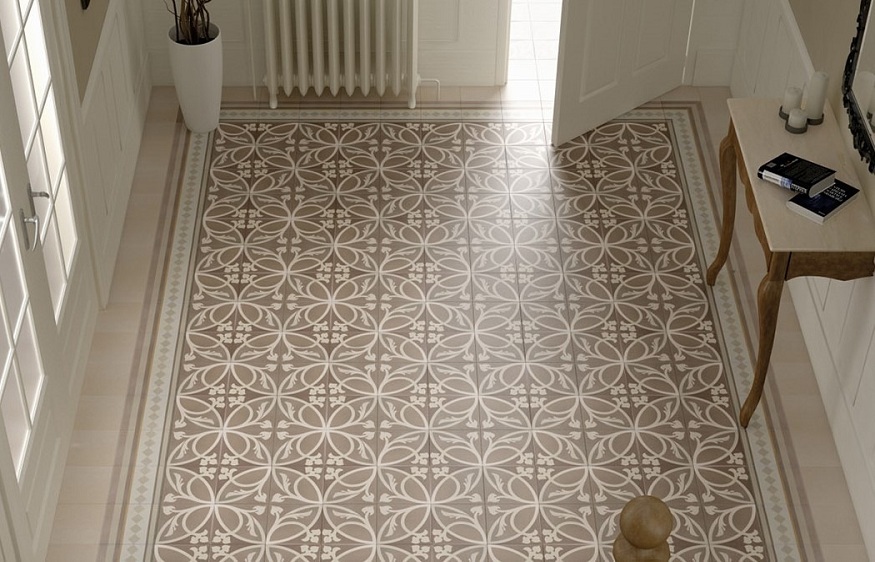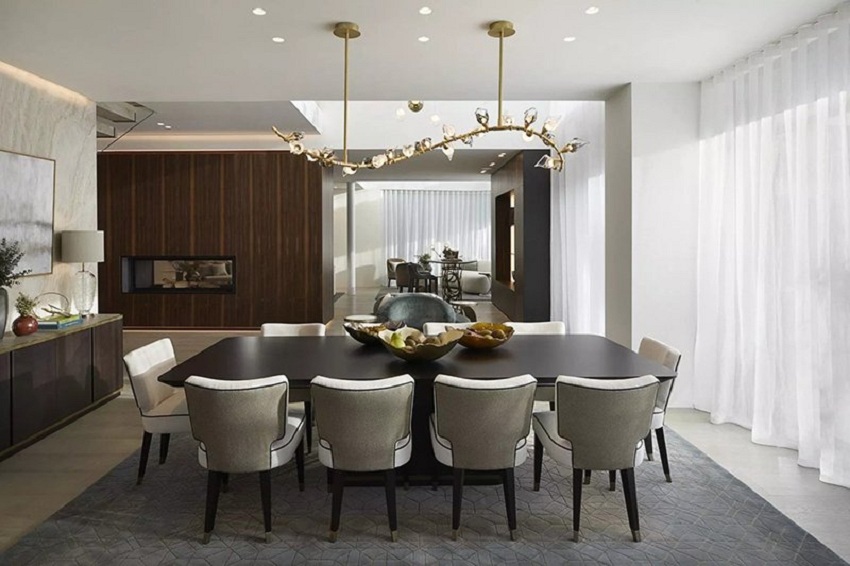Decorative Victorian tiles have played a significant role in architectural history, bringing intricate patterns, colour, and charm to some of the world’s most distinguished buildings. Their use in grand public spaces, historic residences, and cultural landmarks has left a lasting legacy that continues to inspire modern tile designs. From iconic palaces to railway stations, these tiles have adorned floors and walls with elegance and craftsmanship that define an era of detailed and artistic design.
The Palace of Westminster, London
The Palace of Westminster, home to the UK Parliament, is one of the most recognisable buildings that features decorative Victorian tiles. During its extensive reconstruction in the mid-19th century, renowned architect Augustus Pugin played a key role in designing intricate tilework that complemented the Gothic Revival style. The floors of Westminster’s corridors and chambers are adorned with geometric and floral patterned tiles, creating a grand and historically rich setting that reflects the craftsmanship of Victorian England.
The Royal Albert Hall, London
Another famous London landmark featuring decorative Victorian tiles is the Royal Albert Hall. Built in 1871, this renowned concert venue showcases elaborate tilework in its grand entrance hall and corridors. Victorian mosaic tiles were used to enhance the intricate detailing of the interior, providing an opulent and timeless aesthetic. The Hall’s use of patterned floor tiles, often seen in elaborate swirling and geometric designs, highlights the influence of Victorian-era decorative art.
St. Pancras International, London
One of the most architecturally impressive railway stations in the world, St. Pancras International is a masterpiece of Victorian Gothic Revival design. Opened in 1868, the station features exquisite decorative tiling in various areas, including the booking hall and the Midland Grand Hotel, which forms part of the station complex. The intricate tiled floors and walls provide a glimpse into the ornate Victorian style that characterised public buildings of the era, blending beauty with functionality.
The Victoria and Albert Museum, London
The Victoria and Albert Museum (V&A) is not only a museum dedicated to art and design but also a showcase of Victorian craftsmanship. Its interiors feature an extensive collection of decorative tiles, many of which were created during the height of the Victorian period. The museum’s grand entrance and tiled corridors exhibit some of the finest examples of patterned tiles from the 19th century, making it an essential visit for those interested in historic tilework.
Casa Vicens, Barcelona
Designed by the legendary architect Antoni Gaudí, Casa Vicens is an early example of Gaudí’s unique architectural style that incorporates decorative Victorian-influenced tiles. Built between 1883 and 1885, this residence features intricate tilework inspired by Victorian and Moorish designs, blending geometric patterns with vibrant colours. The use of tiles throughout the façade and interior walls demonstrates the influence of Victorian tile artistry beyond Britain, showcasing how the style influenced European architecture.
The Natural History Museum, London
The Natural History Museum is an iconic example of Victorian architecture, with intricate tilework integrated into both the interior and exterior of the building. Designed by Alfred Waterhouse and completed in 1881, the museum features beautifully decorated ceramic tiles that depict animals, plants, and scientific motifs. These decorative elements not only enhance the grandeur of the museum but also highlight the role of tilework in Victorian-era storytelling and education.
The Brighton Pavilion, Brighton
Originally built as a seaside retreat for King George IV, the Brighton Pavilion underwent Victorian-era enhancements that introduced decorative tilework to its interiors. The blend of Indian and Chinese-inspired designs with classic Victorian tiling gives the Pavilion a unique and eclectic aesthetic. The use of patterned floor and wall tiles within the building’s lavishly decorated rooms showcases the fusion of global influences that defined Victorian design sensibilities.
The Glasgow City Chambers, Scotland
Opened in 1888, the Glasgow City Chambers is one of Scotland’s most important civic buildings, renowned for its elaborate interiors. Decorative Victorian tiles feature prominently in its grand entrance hall, staircases, and corridors. The beautifully patterned mosaic flooring adds to the sense of grandeur, reflecting the wealth and industrial success of Glasgow during the Victorian period.
The Rijksmuseum, Amsterdam
Although primarily associated with Dutch Renaissance and Gothic Revival influences, the Rijksmuseum in Amsterdam also features decorative Victorian-style tiling in its restored interiors. Originally opened in 1885, the museum’s extensive use of colourful ceramic tiles within its galleries and entrance halls aligns with the era’s European embrace of intricate tiling. The use of floral and geometric patterns on walls and floors exemplifies how Victorian tile designs influenced architectural styles beyond Britain.
The Boston Public Library, USA
As one of the earliest public libraries in the United States, the Boston Public Library showcases impressive architectural details, including decorative Victorian-inspired tiling. Completed in 1895, the library features intricately designed tile flooring, particularly in its grand staircase and reading rooms. The influence of Victorian tile artistry can be seen in the use of mosaic and patterned tiles that contribute to the elegance and historical significance of the building.
Lisbon’s Rossio Railway Station, Portugal
The Rossio Railway Station in Lisbon, completed in the late 19th century, is a stunning example of Neo-Manueline architecture that incorporates Victorian-inspired tiling. The station’s interiors feature beautifully patterned ceramic tiles, while its exterior is adorned with ornate detailing that reflects a combination of Portuguese and Victorian design elements. The station remains one of Lisbon’s most architecturally significant structures, demonstrating the widespread appeal of decorative Victorian-style tiles across Europe.
The Influence of Victorian Tiles in Architecture
The enduring appeal of decorative Victorian tiles lies in their timeless beauty, versatility, and craftsmanship. Many of the world’s most prominent buildings have incorporated these tiles to enhance architectural detail, creating visually stunning interiors and exteriors. Whether in grand railway stations, museums, or palatial residences, Victorian tiles continue to be a defining element in historic and contemporary design.
As modern designers draw inspiration from the past, decorative Victorian-style tiles remain a popular choice for both restoration projects and new luxury spaces. Their intricate patterns and vibrant colours continue to captivate, ensuring that the legacy of Victorian tile artistry lives on in architecture around the world.



